Finchop1
Member
- Joined
- Mar 2, 2020
- Messages
- 38
- Reaction score
- 31
- Points
- 18
- Location
- Monee, Illinois
- Country
- United States
- Display Name
- Steve
White worms (Enchytraeus sp.) are cultured as a live food source by hobbyists the world over. There are many ways to culture them and those methods do work to varying degrees of success. When I raised exotic finches, I was taught to soak white bread in milk and place in whiteworm container. Worms would gather underneath the bread and a scoopful of soil with WW's mixed in. Finches love picking through the soil/ww mixture and quickly came into breeding condition.
This worked for me as I just kept replacing the soil taken out to feed. Looking back I realize that it was an inefficient method for WW production.
A few years ago I attended an American Livebearer Association convention in Michigan. A gentleman in his 80's shared his method using dark rye bread, plain yogurt and brewers yeast to easily produce mass quantities of whiteworms.
1. Fill plastic shoebox with sterile topsoil (no additives of any kind)
2. Add white worm culture and lightly mix into top 1/2" of soil.
3. Slather plain greek yogurt on toasted dark rye bread to 1/4" thickness.
4. Lightly sprinkle dry brewers yeast over yogurt.
5. Invert bread onto culture and cover culture with cheesecloth to prevent mites incursion.
Worms will accumulate underneath and around the sides of the bread. To harvest, use a spoon or knife to pick up worms and place in cup of water.
Rinse any soil from worms by pouring from cup to cup, changing water each time. Easy process that takes about 1 minute. Viola! Lots of clean delicious whiteworms!
Dark rye bread is used as it has natural anti-mold characteristics that lighter breads do not. White bread molds within a day. Dark rye takes 4-5 days to mold.
Dark rye bread must be toasted very dry, basically you want to spread the yogurt on a dry crisp rye cracker.
The white worms are mostly eating the yogurt which when combined with brewers yeast turbocharges their production. I usually replace bread every 3-5 days depending on how it looks. If the colony is too wet the worms will cover the surface of the soil and climb all over the sides of the box. If this happens just allow box to dry out for a day or two. The pic with the spoon shows just one of the 3 teaspoonfuls of pure whiteworms harvested that day.
The following series of pictures illustrates the process:
This worked for me as I just kept replacing the soil taken out to feed. Looking back I realize that it was an inefficient method for WW production.
A few years ago I attended an American Livebearer Association convention in Michigan. A gentleman in his 80's shared his method using dark rye bread, plain yogurt and brewers yeast to easily produce mass quantities of whiteworms.
1. Fill plastic shoebox with sterile topsoil (no additives of any kind)
2. Add white worm culture and lightly mix into top 1/2" of soil.
3. Slather plain greek yogurt on toasted dark rye bread to 1/4" thickness.
4. Lightly sprinkle dry brewers yeast over yogurt.
5. Invert bread onto culture and cover culture with cheesecloth to prevent mites incursion.
Worms will accumulate underneath and around the sides of the bread. To harvest, use a spoon or knife to pick up worms and place in cup of water.
Rinse any soil from worms by pouring from cup to cup, changing water each time. Easy process that takes about 1 minute. Viola! Lots of clean delicious whiteworms!
Dark rye bread is used as it has natural anti-mold characteristics that lighter breads do not. White bread molds within a day. Dark rye takes 4-5 days to mold.
Dark rye bread must be toasted very dry, basically you want to spread the yogurt on a dry crisp rye cracker.
The white worms are mostly eating the yogurt which when combined with brewers yeast turbocharges their production. I usually replace bread every 3-5 days depending on how it looks. If the colony is too wet the worms will cover the surface of the soil and climb all over the sides of the box. If this happens just allow box to dry out for a day or two. The pic with the spoon shows just one of the 3 teaspoonfuls of pure whiteworms harvested that day.
The following series of pictures illustrates the process:
Attachments
-
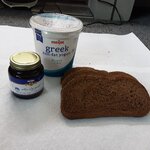 20210403_215915.jpg1.4 MB · Views: 1,153
20210403_215915.jpg1.4 MB · Views: 1,153 -
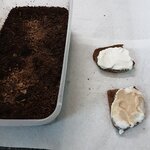 20210403_220257.jpg961.3 KB · Views: 932
20210403_220257.jpg961.3 KB · Views: 932 -
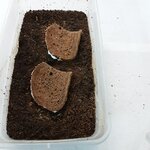 20210403_220333.jpg786.2 KB · Views: 667
20210403_220333.jpg786.2 KB · Views: 667 -
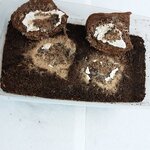 20210404_152138.jpg984 KB · Views: 572
20210404_152138.jpg984 KB · Views: 572 -
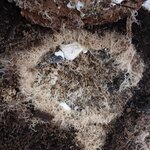 20210404_152148.jpg1.1 MB · Views: 690
20210404_152148.jpg1.1 MB · Views: 690 -
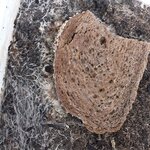 20210404_164241.jpg1.2 MB · Views: 508
20210404_164241.jpg1.2 MB · Views: 508 -
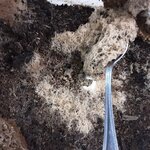 20210405_132855.jpg1 MB · Views: 725
20210405_132855.jpg1 MB · Views: 725 -
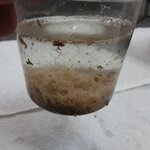 20210405_132944.jpg1.3 MB · Views: 539
20210405_132944.jpg1.3 MB · Views: 539 -
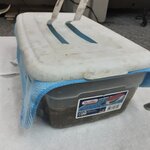 20210405_133043.jpg480 KB · Views: 588
20210405_133043.jpg480 KB · Views: 588
